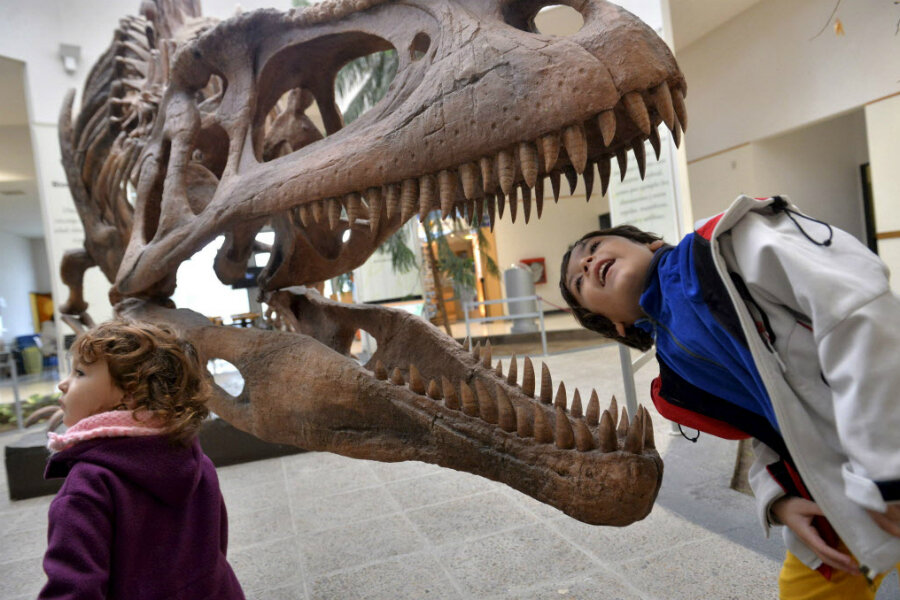Why the 'Tufts-Love' teenage dinosaur is so important
Loading...
There’s more to “Tufts-Love” than prehistoric star power and a cute name.
Last week, University of Washington paleontologists announced the discovery of a remarkable Tyrannosaurus rex fossil. Its near-complete skull, excavated from Montana’s Hell Creek Formation, is one of just 15 in the world. But its rarity is only part of the story – the skull could also reveal new details about the world’s most famous dinosaur.
“Having seen the ‘Tufts-Love Rex’ during its excavation I can attest to the fact that it is definitely one of the most significant specimens yet found,” said paleontologist Jack Horner, research associate at the Burke Museum and consultant for the “Jurassic Park” series, in a statement. “And because of its size, [it] is sure to yield important information about the growth and possible eating habits of these magnificent animals.”
The 4-foot-long skull was found beneath rock layers dated to the Cretaceous-Paleogene mass extinction event, which wiped out all non-avian dinosaurs. In other words, this T. rex died just a few hundred thousand years before its species went completely extinct. The fossil was named “Tufts-Love” after the two volunteers who discovered it: Jason Love and Luke Tufts.
Tufts-Love was about 15 years old when it died, some 66.3 million years ago. At 40 feet in length, this teenaged carnivore was about 85 percent as large as the biggest T. rex ever found. Researchers have excavated about 20 percent of the whole skeleton and expect to find more remains buried at the site, though it’s unclear how intact the skeleton might be.
The skull, wrapped in plaster and weighing over a ton, is currently on display at the University of Washington’s Burke Museum of Natural History and Culture. In 2019, researchers will relocate the fossil to a new facility and begin to slowly remove it from its casing. From there, researchers will begin to pour over Tufts-Love in search of new data.
“Skulls are the business end of the animal, in terms of how it feeds and makes its living,” Greg Wilson, the Burke Museum’s adjunct curator of vertebrate paleontology, tells The Christian Science Monitor in a phone interview. “The more information we have about how that skull goes together, the better we are able to understand the power of this animal.”
Dr. Wilson and colleagues have high hopes that the skull will attract top paleontologists, who will be able to glean new insights about how the T. rex lived and matured.
“From the Triceratops skulls we’ve accumulated over the course of a century, we’ve been learning how that animal grows. That’s because we have enough skulls to form a sequence, from babies all the way up to mature adults,” Wilson says. “With T. rex, we don’t have that yet. We’re still piecing together the growth trajectory of this top predator.”
And there’s even more to learn. In recent years, dinosaur skulls have revealed new and surprising insights about brain capacity, bite power, and sensory structures like hearing. In 2012, researchers found a large Tyrannosaurid so well-preserved that you could still see the feathers on it.
Long bones, just like the ones Burke Museum researchers hope to find buried in the hillside at Hell Creek, can preserve soft tissue and evidence of past pregnancies. Every new fossil adds to the database of knowledge and paints a clearer picture of the long-extinct carnivore.
“I think it’s a real paradox that it’s the iconic dinosaur of toy sets and movies, but we have so few of them,” Wilson says. “But there are just not that many complete specimens, compared to triceratops or duck-billed dinosaurs. We’re fascinated, but it’s still shrouded in mystery, how that animal really lived and how it actually looked.”






